FAQ
WHO HAS A SEPTIC TANK?
Usually people that live in the country or houses that are not on town sewer have a septic tank/systems. If you DO NOT get a monthly sewage bill you probably have a septic system. (It is possible to have town water but still have a septic system)
WHAT IS A SEPTIC TANK?
Septic tanks come in all shapes and sizes 800, 1000, 1500, 2000 or even 3000 imperial gallons. Usually the size of the tank depends on either the square footage or the number of bedrooms and bathrooms in a house. A lot of older tanks consist of just 1 chamber, where as all modern tanks consist of 2 chambers. Modern septic tanks have two lids to access the tank, one over the inlet and one over the outlet. When you get your septic tank pumped it is advised to have both lids exposed.
A lot of new septic systems require a pump-up system. This requires you to have a pump chamber after the main tank by which the water is then pumped up into a raised bed (instead of gravity fed, the traditional method). This pump is only mechanical and can quit over time. It is also advised to expose this chamber when you call as we like to make sure that everything is working alright.
HOW DO I FIND MY SEPTIC TANK?
To locate your septic tank, you need to find the 4″ black pipe in your basement going through your foundation. Your septic tank is usually buried 5-8ft from the basement wall where the black pipe exits. This all depends on the lay of the land and where your well is located on your property. If you are having trouble finding your septic tank, you can either contact the health department (they usually keep records for approx 30 years) or contact us to help you find it.
HOW DOES MY SEPTIC SYSTEM WORK?
A septic system contains a septic tank and a leaching bed (tile bed). First your septic tank receives wastewater from your home including sink, bathtubs, toilets, wash machines, dishwashers, etc. As the tank fills up, the lighter organic matter floats where as the heavier sinks to the bottom (we call this sludge). The water in the middle of the tank is then picked up by the second chamber and processed again, much like the first chamber. This time the water from the second chamber is picked up by the outlet and sent out into the leaching bed to get absorbed.
WHAT CAN AND CANNOT BE FLUSHED?
In the most ideal situation, you’d only want human waste and wastewater to go into your tank. This means monitoring the type and amount of toilet paper usage. A properly cared for and maintained tank can handle small amounts of biodegradable soaps, detergents, wastes, and household cleaners. Be sure to never flush tampons, diapers, cigarette butts, coffee grounds, and toxic drain cleaners.
IS THERE BACTERIA IN MY TANK? AND WHAT DOES IT DO?
Yes, there is bacteria in all septic tanks. The bacteria in the tank helps to break down the solid organic waste and turn it into liquid (it is during this process that natural gases like nitrogen and phosphorus are produced). As time goes on the liquid in the tank gets thicker (called sludge) and should be removed. So when you use excessive disinfectant (antibacterial), this kills off the bacteria and leaves you with a tank that is not functioning properly.
WHEN SHOULD I GET MY SEPTIC TANK PUMPED?
How often you get your septic tank pumped depends on two things; how many people living in the house and the size of your tank.
For example, a household of 4 people with a 1,000 gallon tank would need to be pumped every 3 years.
Another example, a household of 4 people with a 1,500 gallon tank would need to be pumped every 5 years.
Your best bet is to get your tank pumped at least every 3-5 years to make sure that NO SLUDGE gets into your leaching bed, as this can diminish the life span of your leaching bed and end up costing you a lot of money! This is preventative maintenance.
WHAT HAPPENS WHEN I GET MY SEPTIC TANK PUMPED?
When you call to have your septic tank pumped out, you should have both septic lids exposed (do not open the lids yourself). If you have trouble located your tank or your lids, we have no problem coming out and helping to locate them. Then, we pump out your tank with our vacuum truck and get it as clean as possible without harming the live bacteria in the tank. After the pump out, we inspect the tank to make sure that everything is working properly and is up to standards. This is usually the time that you may ask any questions to the driver that you may have about your septic. When the tank is empty and the inspection is complete, the driver will advise you when you should have your tank maintained again.
WHAT HAPPENS IF I DON'T GET MY SEPTIC TANK PUMPED?
When you don’t get your tank pumped regularly, thick organic waste called sludge starts to build up in the bottom of the tank. As the sludge builds up, it eventually reaches the outgoing pipe and is sent out into the leaching bed along with your water. The more sludge that gets sent out into the leaching bed, the more it begins to plug the absorption field. Eventually the leaching bed with be completely blocked and cause a backup into your septic tank and then into your house. In the end you will have to replace your leaching bed and this can be very costly! A new leaching bed is usually into the tens of thousands of dollars!
HOW CAN I TELL IF MY LEACHING BED IS FAILING?
Here are a few signs that your septic system may be starting to fail:
Your backyard is wet or mushy (especially where the leaching bed is located)
The grass over the leaching bed is greener than the rest of the backyard (you may even see lines of green grass)
Sewage orders in the backyard or in the house
Slow running drains in the house, or even a backup into your bathtub or toilets.
Contact Us
Service Hours
Social Media












